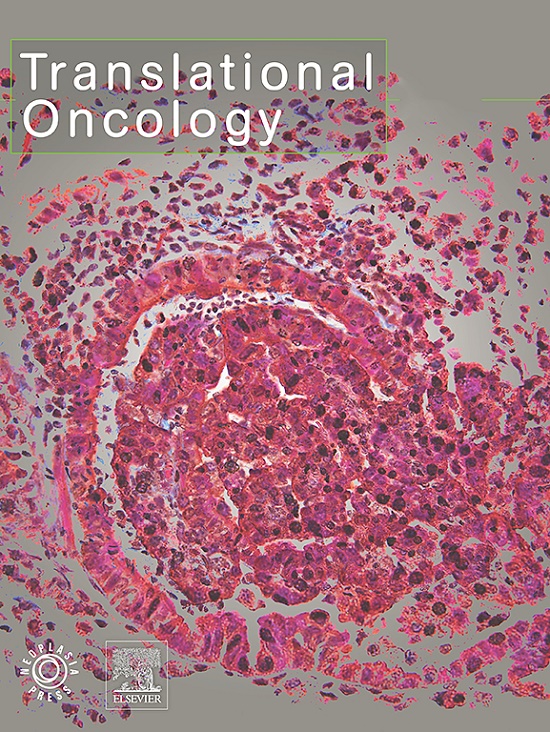Identification of cancer-associated fibrolast subtypes and distinctive role of MFAP5 in CT-detected extramural venous invasion in gastric cancer
IF 5
2区 医学
Q2 Medicine
引用次数: 0
Abstract
Extramural venous invasion (EMVI) detected by computed tomography has been identified as an independent risk factor for distant metastasis in patients with advanced gastric cancer (GC). Cancer-associated fibroblasts (CAFs) are critical for remodeling the tumor microenvironment in GCs. Here, we report that MFAP5+ CAFs promote the formation of EMVI imaging in GC. We detected gene expression in pathological samples from 13 advanced GC patients with EMVI. Radiogenomics results showed the degree of CAFs infiltration was directly proportional to the EMVI score and EMT pathway in GC patients. Single-cell sequencing data analysis results showed that MFAP5+CAFs subtypes in GC were negatively correlated with patient prognosis and were enriched in tumor lactylation modification and EMT pathways. Immunohistochemistry results showed that the expression of MFAP5, L-lactyl and EMT markers in GC tissues was proportional to the EMVI score. CAF from gastric cancer tissue was extracted using collagenase method and co-cultured with GC cell line in vitro. After lentivirus knockdown of MFAP5 in CAFs, the levels of L-lactoyl and histone lactylation modifications were significantly reduced, and the sphere-forming and vascularization abilities of CAFs were significantly inhibited. Cell function experiments showed that MFAP5+ CAFs can affect the EMT, metastasis and invasion capabilities of GC cells. In vivo experimental results of the nude mouse in situ EMVI model suggest that MFAP5+ CAF may promote the formation of EMVI imaging features in GC by regulating lactylation modification. This innovative work may provide important new references for the diagnosis and treatment of GC.
确定癌症相关纤维细胞亚型以及 MFAP5 在 CT 检测到的胃癌壁外静脉侵犯中的独特作用。
通过计算机断层扫描检测到的壁外静脉侵犯(EMVI)已被确定为晚期胃癌(GC)患者发生远处转移的独立危险因素。癌症相关成纤维细胞(CAFs)对于重塑胃癌的肿瘤微环境至关重要。在此,我们报告了 MFAP5+ CAFs 可促进 GC 中 EMVI 成像的形成。我们检测了 13 例晚期 GC 患者病理样本中 EMVI 的基因表达。放射基因组学结果显示,CAFs的浸润程度与GC患者的EMVI评分和EMT途径成正比。单细胞测序数据分析结果显示,GC中的MFAP5+CAFs亚型与患者预后呈负相关,并富集于肿瘤乳化修饰和EMT通路。免疫组化结果显示,胃癌组织中MFAP5、L-乳酸和EMT标记物的表达与EMVI评分成正比。用胶原酶法提取胃癌组织中的CAF,并在体外与GC细胞系共同培养。慢病毒敲除CAF中的MFAP5后,L-乳酰基和组蛋白乳酰化修饰水平明显降低,CAF的球形成能力和血管化能力明显受到抑制。细胞功能实验表明,MFAP5+ CAFs能影响GC细胞的EMT、转移和侵袭能力。裸鼠原位EMVI模型的体内实验结果表明,MFAP5+ CAF可通过调控乳化修饰促进GC形成EMVI成像特征。这项创新性工作可为 GC 的诊断和治疗提供新的重要参考。
本文章由计算机程序翻译,如有差异,请以英文原文为准。
求助全文
约1分钟内获得全文
求助全文
来源期刊

Translational Oncology
ONCOLOGY-
CiteScore
8.40
自引率
2.00%
发文量
314
审稿时长
54 days
期刊介绍:
Translational Oncology publishes the results of novel research investigations which bridge the laboratory and clinical settings including risk assessment, cellular and molecular characterization, prevention, detection, diagnosis and treatment of human cancers with the overall goal of improving the clinical care of oncology patients. Translational Oncology will publish laboratory studies of novel therapeutic interventions as well as clinical trials which evaluate new treatment paradigms for cancer. Peer reviewed manuscript types include Original Reports, Reviews and Editorials.
文献相关原料
| 公司名称 | 产品信息 | 采购帮参考价格 |
|---|---|---|
| 索莱宝 |
DAPI
|
 求助内容:
求助内容: 应助结果提醒方式:
应助结果提醒方式:


